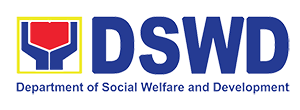“I urge government to continue to entrust us with the responsibility to make the decisions about our own development. Allow us to work with you and make community-driven development (CDD) a way of life for more people and communities.”
This was expressed by Agosto Bonito, a community volunteer of the Kapit-Bisig Laban sa Kahirapan-Comprehensive and Integrated Delivery of Social Services (Kalahi-CIDSS) from Barangay San Rafael in Ragay, Camarines Sur during a learning forum recently.
The Department of Social Welfare and Development (DSWD) organized the forum in partnership with the Millennium Challenge Corporation (MCC), an independent funding agency of the United States of America.
Bonito, a former barangay captain, gave this statement in light of his plea to institutionalize the community-driven development (CDD) strategy utilized by the program, which enables citizens to take an active role in development by choosing, implementing, and managing community projects that will address their basic needs.
He continued, “Iminumungkahi kong isabatas ang Kalahi-CIDSS. Sa Kalahi-CIDSS, walang corruption dahil ang mga volunteers ang magtatrabaho (I motion that Kalahi-CIDSS be turned into law. In Kalahi-CIDSS, there is no corruption because it is the volunteers who work)”.
He is referring to the safeguard measure of the program in which all members of the community can keep track of the finances, materials, and other related activities that would ensure participation, transparency, and accountability in the program’s implementation.
Bonito credits Kalahi-CIDSS for being able to help protect Barangay San Rafael from the effects of strong typhoons, by providing funding and technical support for the construction of a seawall in the village.
He shared that several politicians previously laughed at him when he showed them their proposal for an environmental protection facility, despite their experience of having their barangay almost completely washed out during Typhoon Rosing. It was only in the second year of Ragay’s implementation of Kalahi-CIDSS that they were able to get funding for the construction of their seawall.
Likewise, Mila dela Roca from Brgy. Lower Omon, credited Kalahi-CIDSS for helping educate her and her fellow community volunteers and showing to them their own capacities.
“Mababa lang ang aking pinag-aralan pero iyong pagiging hindi ko natanggihan. Salamat sa Kalahi-CIDSS at binuksan ang aming kaisipan na kahit ang mga mamamayan may kakayahan din (I did not have a high level education, but I could not decline from being a volunteer. Thanks to Kalahi-CIDSS for opening our minds that ordinary citizens also have strengths).”
The activity, held in Naga City, served as the Bicol leg of the series of learning forum as part of the closing activities of the joint project of DSWD and MCC. Dubbed as KC-MCC, the project started in 2011 and is set to end in May 2016.
Aside from Bicol, the other regions that will be conducting their own KC-MCC learning forum are the Cordillera Administrative Region (CAR), Western Visayas, Central Visayas, and Eastern Visayas.
Region IV-MIMAROPA held its own learning forum earlier in January. ###


